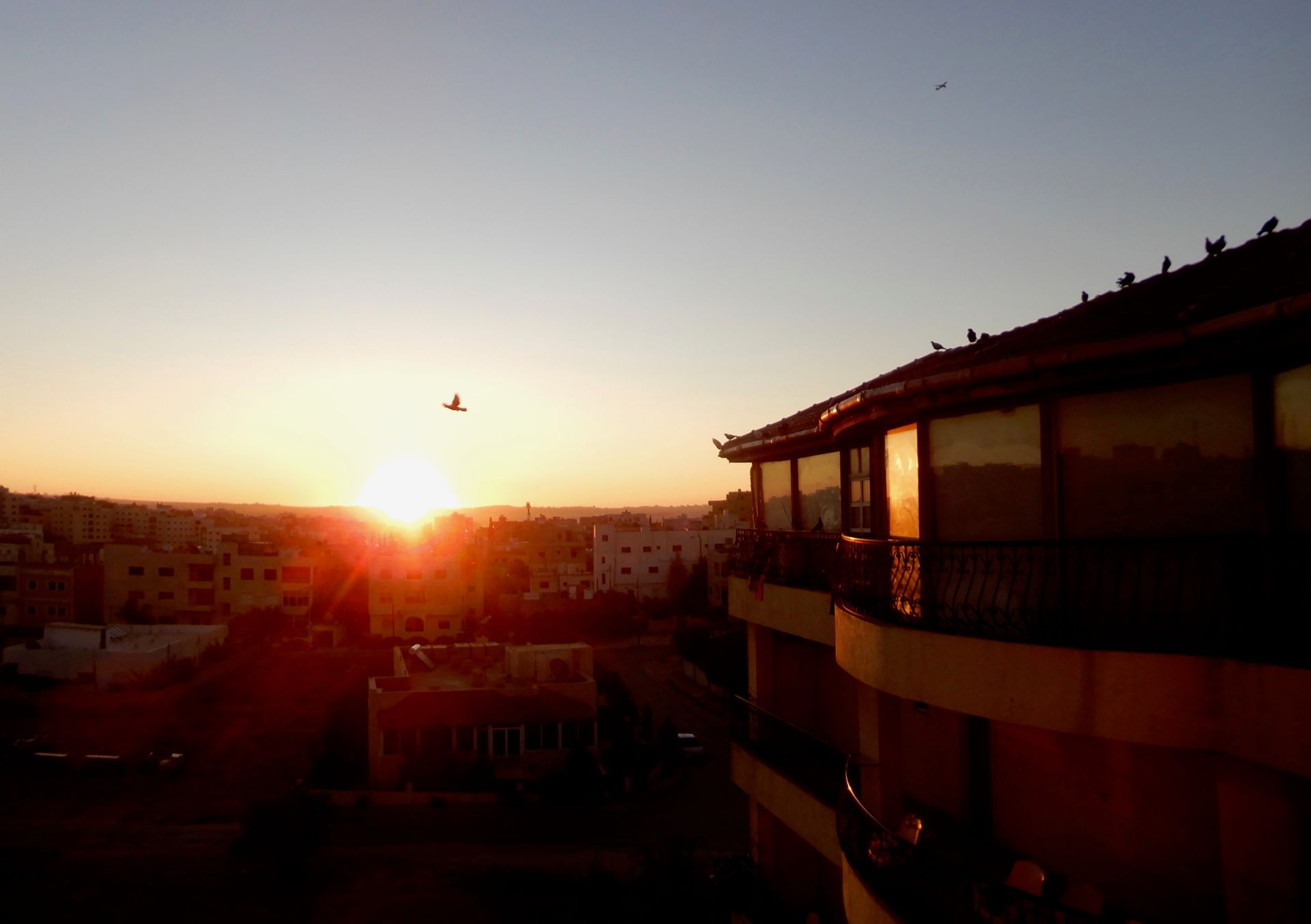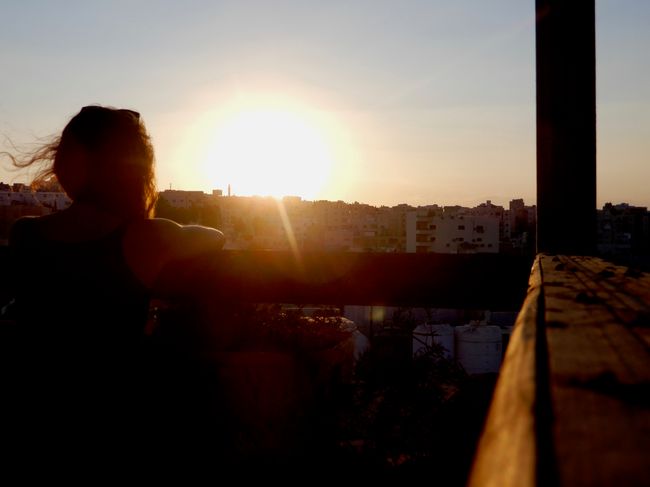From Haifa to the Roadtrip
प्रकाशित: 20.02.2020
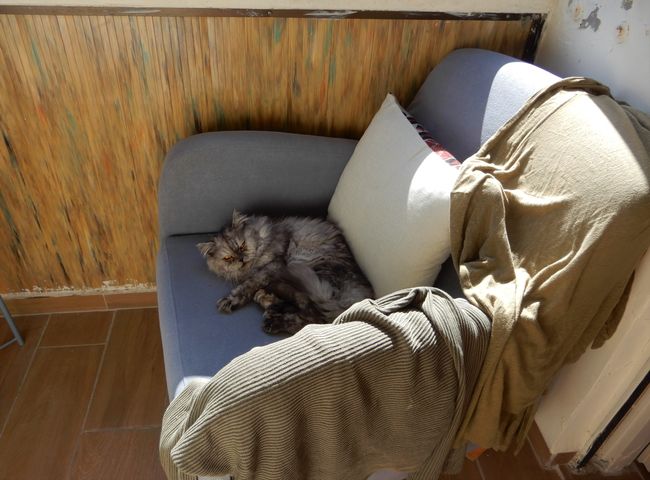
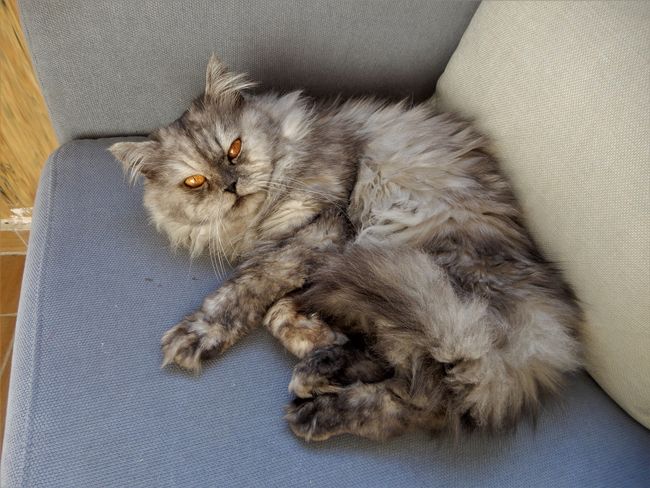
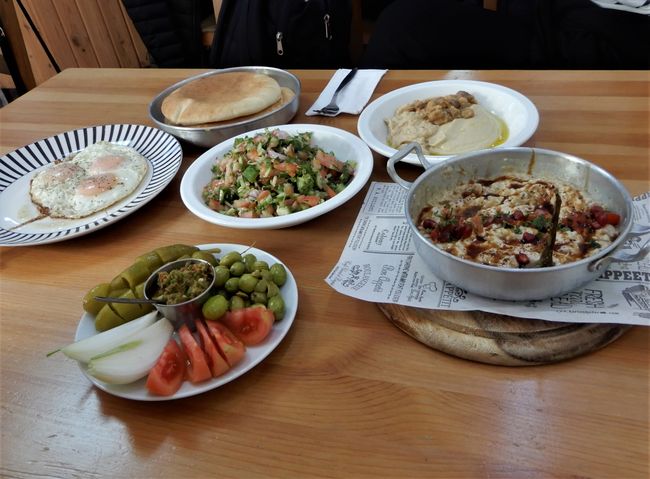
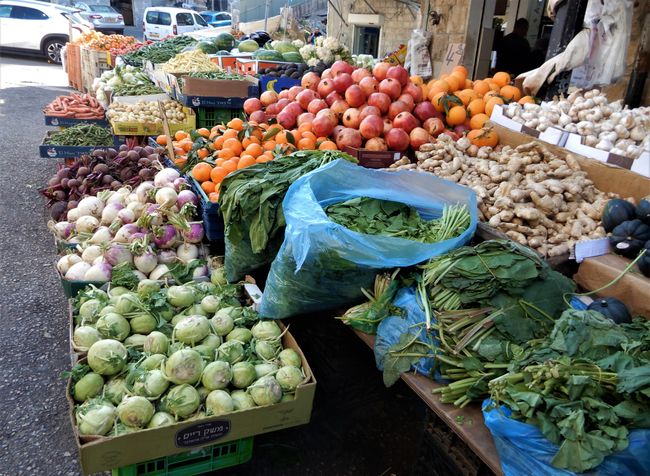
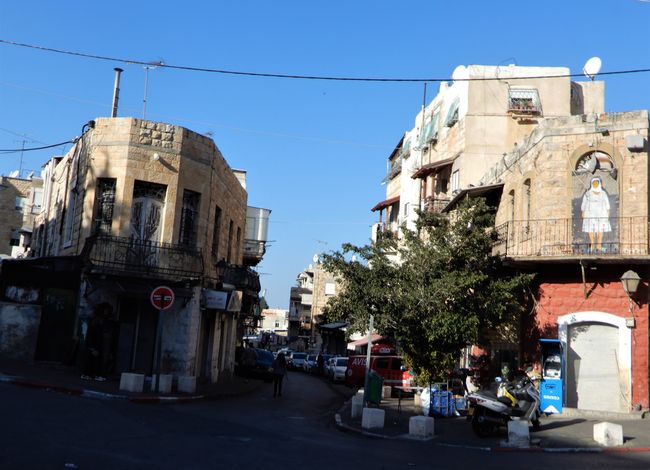
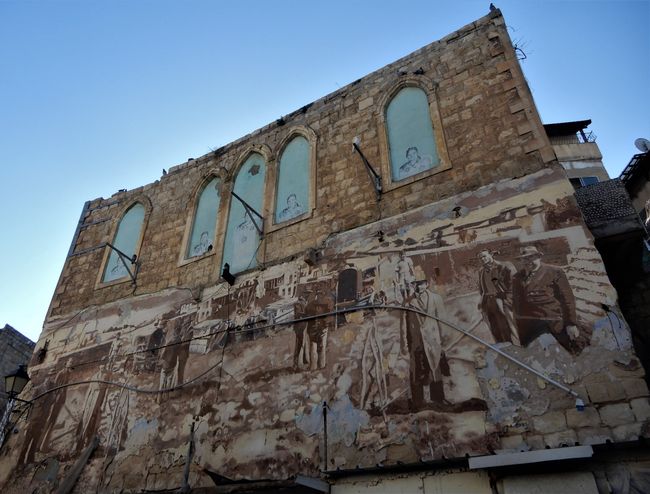
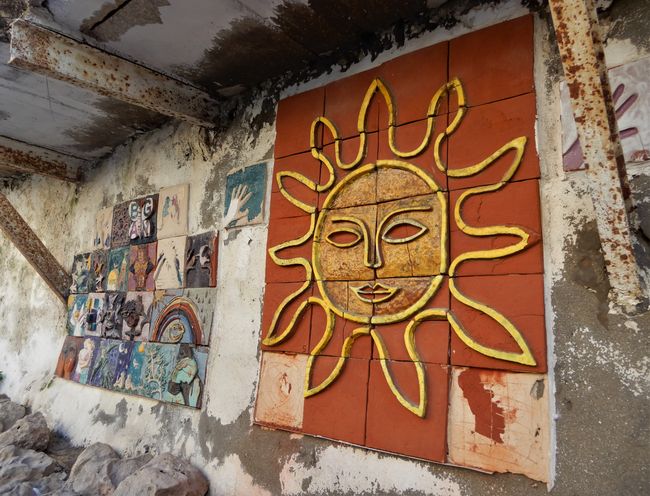
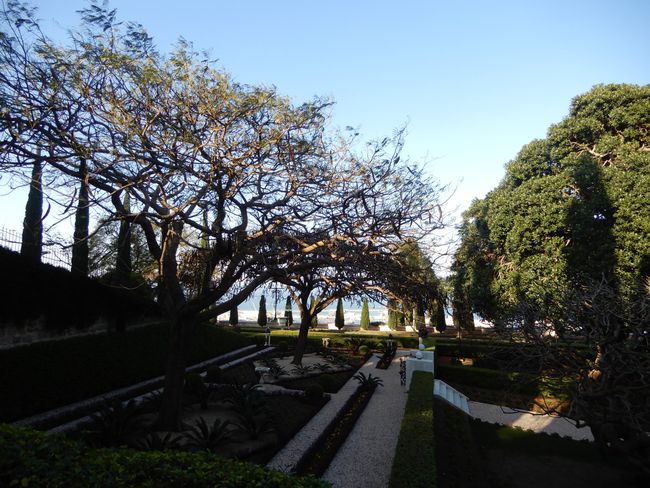
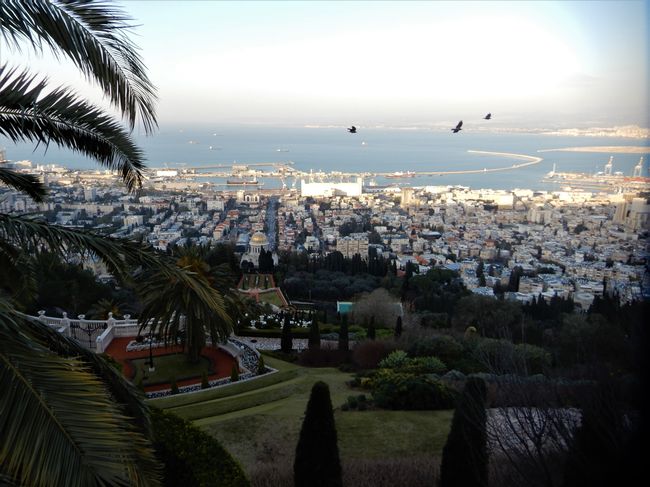
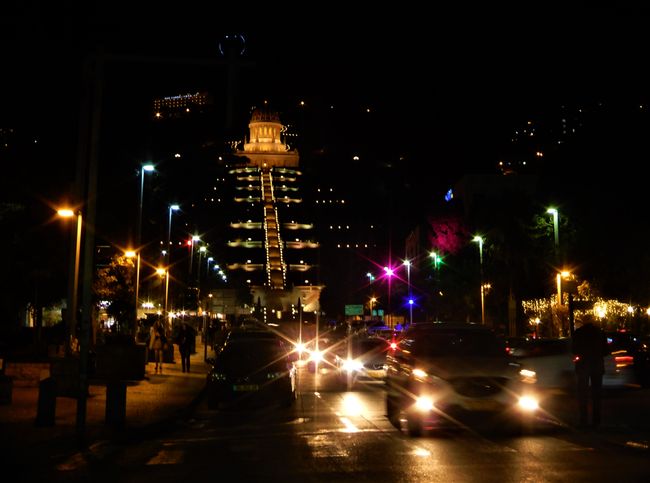
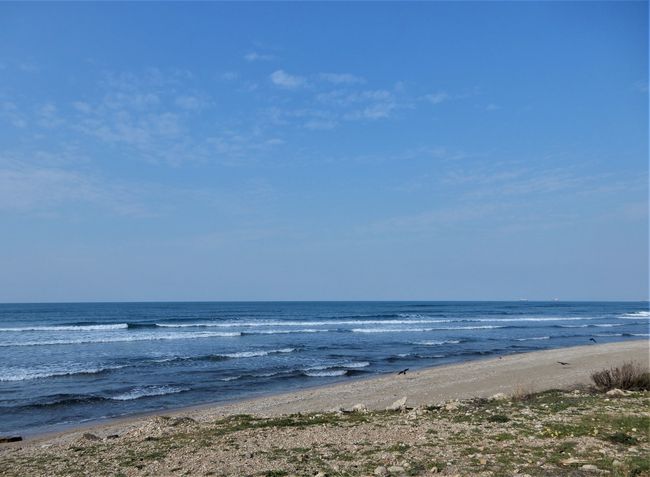
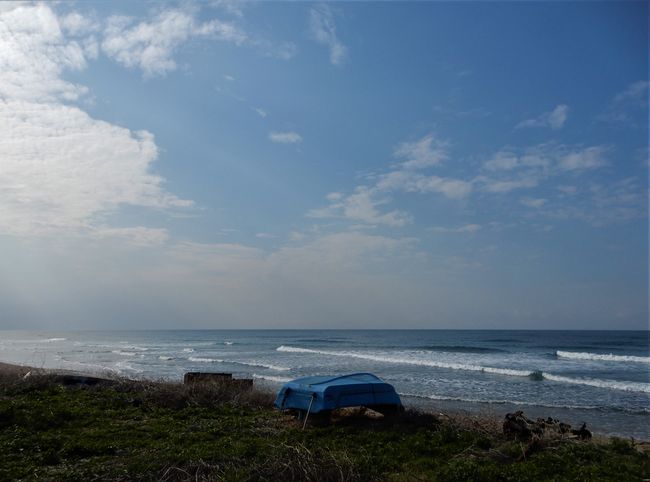
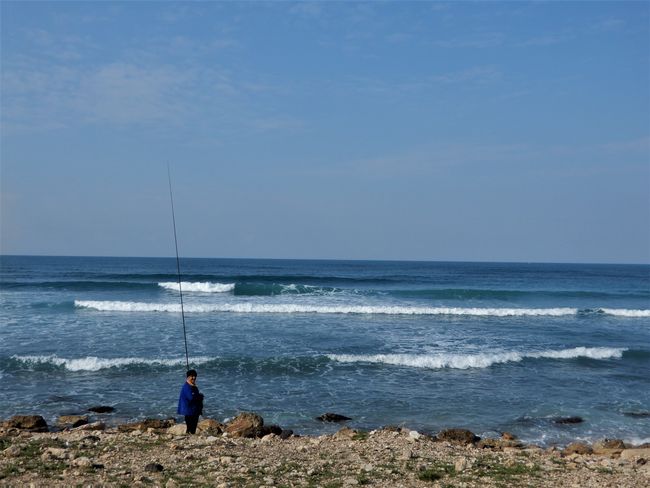
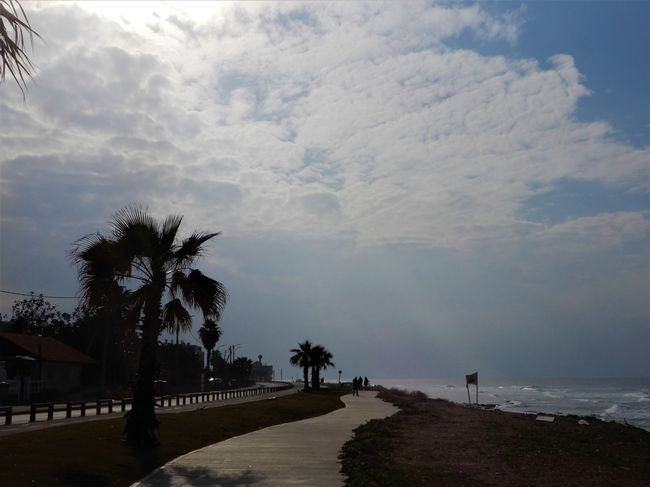
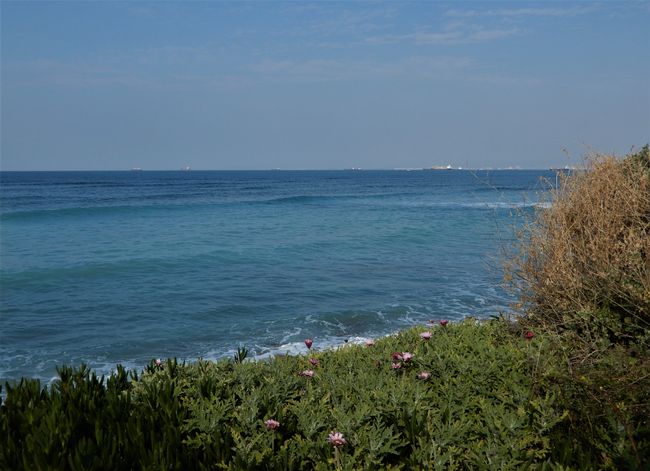
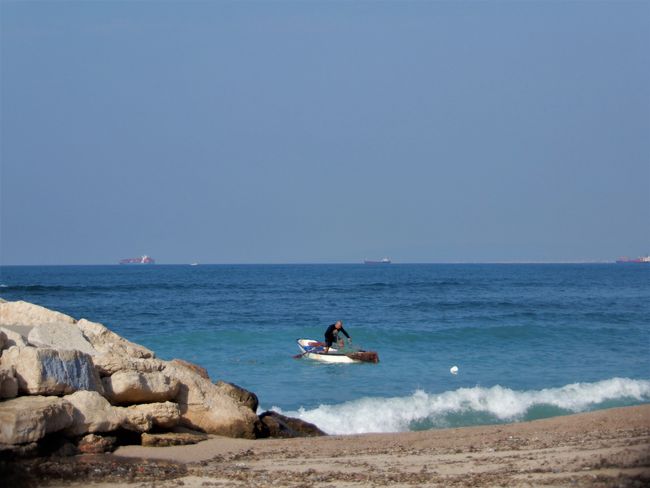
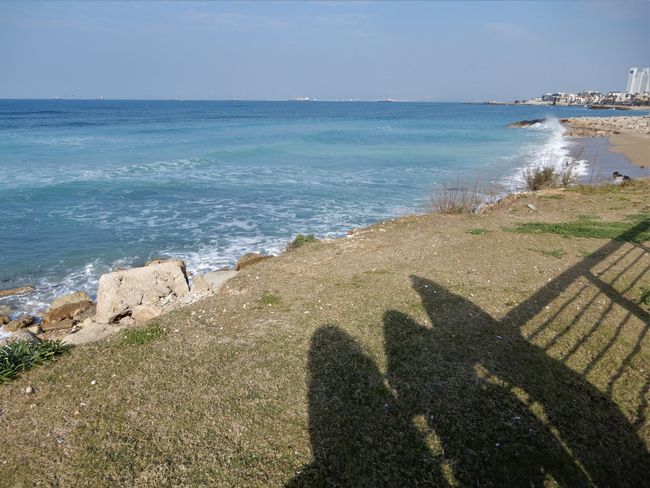
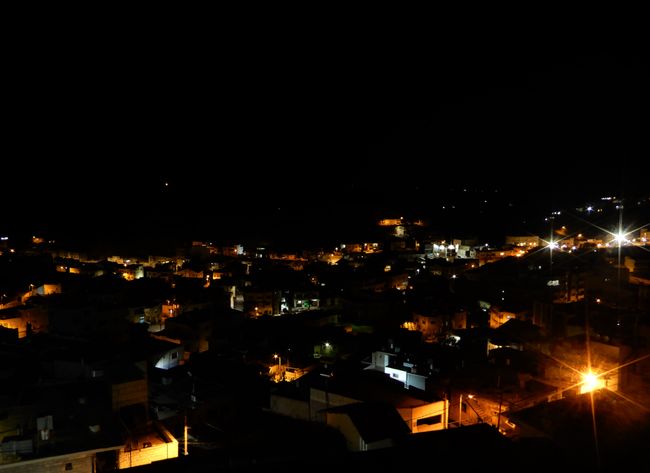
Saturday + Sunday, February 16th + 17th
We sleep in a bit longer, hop in the shower and say goodbye to Firas, who is now flying to Brussels for vacation. He kindly allows us to stay in his apartment again and spend another night there.
For breakfast at 2 pm, we go to Stephan's Café (recommended by Clara, who has been to Haifa before) where they serve extremely delicious hummus & co., and we stuff ourselves there before strolling through Haifa's sunny streets. We already saw the Bahai Gardens from below during our last short visit to Haifa - today we take the upper entrance and have a wonderful view of the golden dome of the Bahai Shrine and all of Haifa from there.
And there isn't much more on the agenda for today. We take our time to walk back down from the hill, take a short break in a café, and then make a detour to the supermarket on our way back to the apartment to buy some groceries. For the first time since we've been traveling, we cook something together: pasta with tomato sauce. Sounds simple, but it tastes really delicious. Elias and Ejo, two of Firas' friends, come by later and take us for a short tour of Haifa before we take care of the house ourselves tonight.
The next day: we pack our things before Ejo picks us up and drives us up the hill in Haifa again. In an Austrian pilgrim café where he works, we have a coffee together and talk a bit about our plans for the next days. When we tell him that we want to go to the Golan Heights next and don't have accommodation yet, he makes a few phone calls and then delivers the good news: a friend of a friend of his is renting an AirBnB apartment in Majdal Shams, the largest Arab town in the Golan Heights, and has three beds available for us. Perfect. Sometimes you just have to know the right people.
Ejo then drops us off at the beach with his car, where we walk back towards the city center in the sunshine and eventually get on a bus. We have been confirmed by various sources that it is difficult to get around in the Golan Heights without a car, which is why we have rented a car for the next three days.
However, it takes more time than expected until we finally sit behind the wheel: after the bus already takes almost an hour, we finally realize that we are not at the right bus stop. The enlightenment comes in the treatment room of a physiotherapist whom we asked for advice and who kindly allows us to use his computer. So we get on another bus and after about two hours, as dusk begins to fall, we finally made it: in a tiny KIA Piccanto, we drive back to the apartment, get our luggage, download the offline map for the Golan Heights, and then head north in the dark.
However, "head north" is not quite the right term. On the one hand, we are stuck in traffic for a long time outside the city. On the other hand, the light of our little tin can is so bad that without high beams, we can only see about ten meters ahead and sometimes crawl instead of drive. In addition, there are heavy vehicles in front of us already in the area of the Golan Heights: we constantly find ourselves in convoys of military trucks. In complete darkness, this is a rather strange feeling. Nevertheless, we arrive in Majdal Shams late in the evening.
We only have a rough idea of where our apartment is located here, so we start looking for parking spaces where we suspect it might be when a car next to us stops. The windows roll down and a man calls out "Lea?" in our direction. It turns out to be Busher, as we later learn, the landlord of our apartment, with whom Lea was in contact. He happened to see our car driving back and forth in the dark and suspected that we were in it. But we are also lucky kids.
Busher now takes us to our apartment, and we are amazed. We didn't expect anything like this here. We enter a huge room with high ceilings, which consists of two parts. There are three beds, couches, beautiful large wooden furniture, a modern bathroom, and a balcony with a view of all of Majdal Shams. Busher tells us that this used to be his recording studio. He has his own band and is a music producer. Meanwhile, he has moved his studio to the neighboring apartment on the same floor. He is still working on songs with his girlfriend there (she is the drummer and singer in his band), and they still have food and beer left if we want to join them.
So we rest a bit on the cozy couch and then pay Busher and his girlfriend a visit. The studio in this new apartment also leaves us in awe. It is also large, well-cut, and furnished with old furniture in an incredibly tasteful way. Busher sits in front of a huge mixing console, and in the next room, there are countless instruments stored. This is certainly a perfect place to be creative. With tasty snacks and beer, Busher tells us a bit about the area here.
We already know that the Golan Heights used to be a former part of Syria that was occupied by Israel in the Arab-Israeli War in 1967. Although no country except Israel and the United States recognizes the Golan Heights as Israeli territory, it is currently a fact: The war resulted in an estimated 80,000 to 130,000 Syrians being displaced from the area. 23,000 Druze still live there (why they were allowed to stay in their area will be explained later), in a small area with five villages controlled by Israel. There used to be 200 villages before the majority of the population there was displaced. However, there are now 33 new villages: inhabited by about 27,000 Jewish settlers.
In principle, the whole situation here in this area is not complicated, Busher tells us. Everyone can read who occupies whom here. End of the story. The Druze were offered Israeli citizenship when the land was occupied, but over 90% of the Druze rejected it. They see themselves as Syrians, not Israelis. Consequently, most of them do not have a passport, but only a document that allows them to live here and travel if they are issued a visa by Israel.
So they are stateless. At the same time, this also means various restrictions. Just a short time ago, Busher's band was booked for a performance in Sweden, which they had to cancel at short notice because they did not get a visa. Visits to the "neighboring country" Syria (in principle, moving around in their own homeland), where virtually all the Druze living here still have relatives, have become almost impossible. Previously, it was still possible to go to Syria for studying, Busher tells us. There was exactly one day a year when students could enter and leave Syria (border crossings in both directions were really only possible once a year). Since the war in Syria in 2011, even that has been prevented. Families divided on both sides are therefore separated for an indefinite period of time.
The situation is hopeless, Busher tells us. There have already been countless demonstrations (peaceful, mind you), petitions, letters to the UN. In the end, however, everything is nonsense. Life must somehow go on. Which he is absolutely right about. But the more you learn about the situation here, the more you can only shake your head. There have always been settlers here in the Golan Heights, and their numbers have increased rapidly since the war in 1967. After the beginning of the war in Syria in 2011, the Golan Heights were even actively advertised on television for Israeli settlers to expand the settlements there.
When asked who actually settles here, Busher notes that unlike most settlements in the West Bank, there are few ultra-Orthodox Jews here in the Golan Heights. Mostly extremely wealthy settlers come here, who mainly stay here on weekends to take a break in the beautiful nature and enjoy their large gardens within the settlements. They have also discovered the very fertile land for themselves, on which locals have been practicing agriculture for ages. The harvest that is now being produced on land controlled by settlers is destroying local agriculture. Many of the local farmers have abandoned their business, Busher tells us. Previously, every family worked in agriculture here, including his own.
After a few days of relaxation, we have now returned to the absurd political reality here on the ground. And as always, it is difficult to comprehend all of this.
May I introduce: Za'atar, Firas' cat
Breakfast at Stephan's Café
Street vegetables in Haifa
Strolling through Haifa's streets
...with some very old graffiti
Neighborhoods' children project: Let the sun rise
In the Bahai Gardens
View from above
...and again at night from below
On the next day during a walk at the beach
Here you can find abandoned boats, ...
...cheerful fishermen, ...
...a beautiful promenade, ...
...pretty flowers, ...
...fishermen...
...and our shadows :-)
Majdal Shams at night
उत्तर
